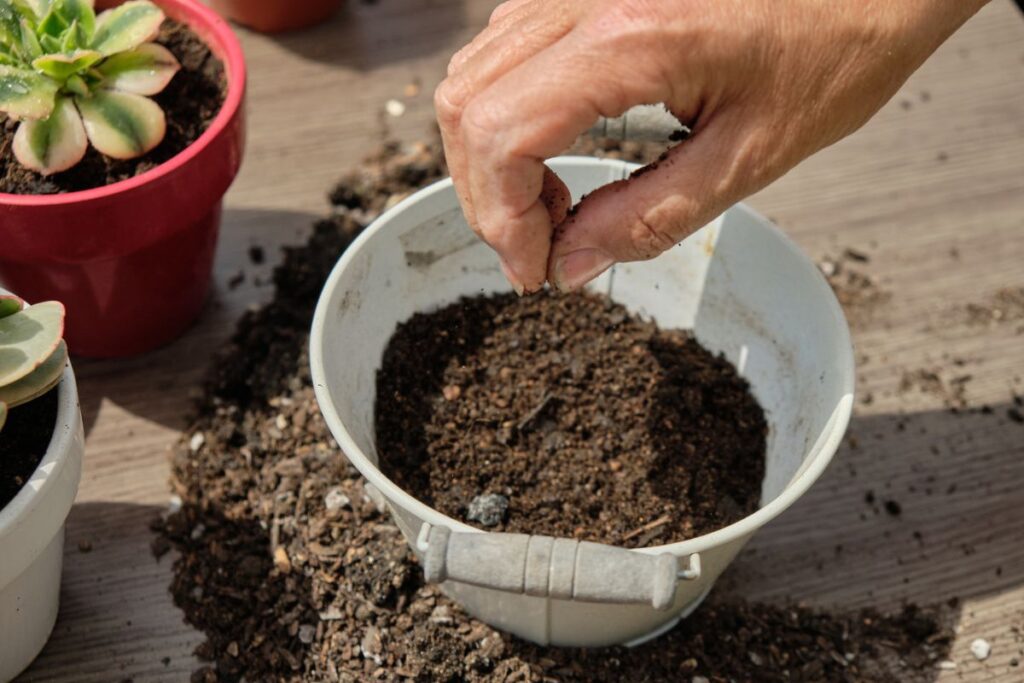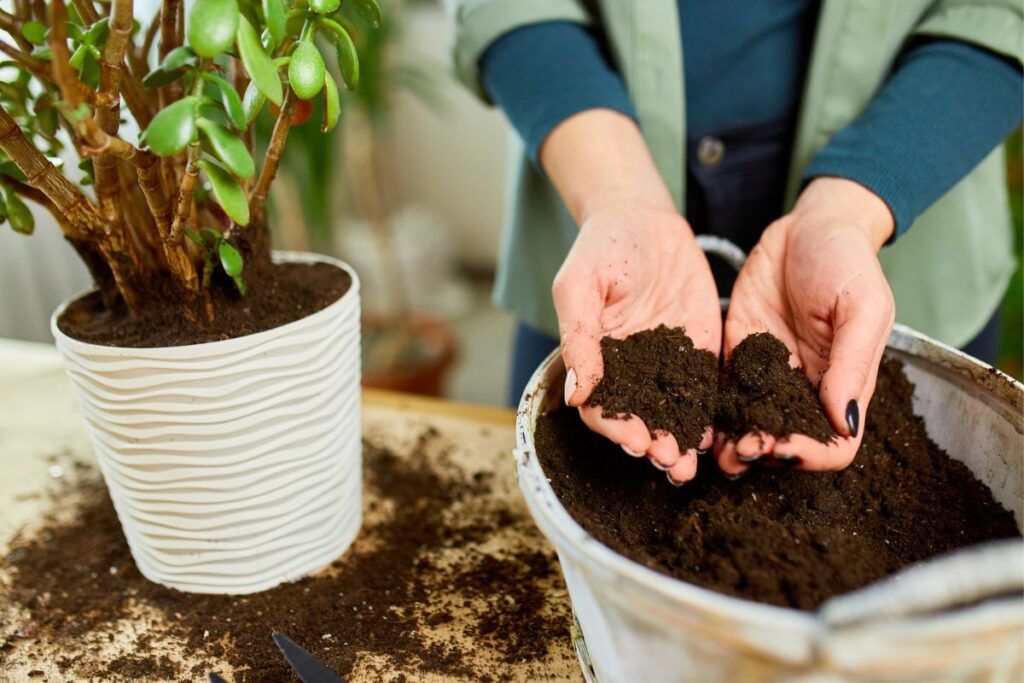Got old potting soil lying around?
Don’t toss it out just yet!
There are clever ways to reuse and revitalize it.
Discover 9 simple methods to give your old soil new life.
Ready to start?
Let’s dive in!
Potential Dangers of Reusing Old Potting Soil
Many gardeners caution against the reuse of old potting soil due to potential risks. Let’s outline some of these hazards.
Risk of Transmitting Diseases and Pathogens
When reusing potting mix, there is a possibility of spreading diseases. Healthy plants are less likely to leave behind harmful pathogens, but if previous plants exhibited signs of disease, such as leaf discoloration or decay, the mix might be contaminated and could endanger new plants. Opting for varieties with natural resilience to specific illnesses, like downy mildew-resistant beans and broccoli, may mitigate the risk; however, no plant is entirely immune to disease.
Risk of Pest Infestation
Unseen to the naked eye, microscopic pests may lay their eggs within the mix, poised to infest new plants. To tackle these hidden threats, one might try methods like drying the mix, or applying solutions like rubbing alcohol or hydrogen peroxide to eradicate the eggs. Identify the pests first, then select the appropriate countermeasure to ensure effectiveness.
Nutrient Depletion
The nutrient value of potting mix diminishes after supporting a plant’s growth cycle. A new plant in the same depleted mix could suffer from lack of essential nutrition, manifesting as poor growth or other issues. To replenish the mix’s vitality and sustain the new plant’s development, consider adding fresh nutrients to the soil before reuse.
Methods to Revitalize Old Potting Soil
Fortunately, you can restore your old potting soil and ensure healthy plant growth by following these straightforward steps. Here’s how you can do it!
Ensure Proper Drying
To stave off mold, spread your potting mix over a clean surface, such as a tarp, until completely dry. This step not only keeps the soil healthy but also simplifies handling it for future use.
Remove Old Roots
After plant extraction, clear out large chunks of roots to facilitate ease of use. Tiny remnants are fine to leave behind since they naturally decompose, which can actually benefit the soil’s ecosystem when reutilized in garden beds.
Add Compost or Fresh Soil
Revive the vitality of your mix by combining three parts of the existing potting soil with one part fresh soil or compost. Adjust the proportion of fresh amendments based on the age of your mix, adding more to older soil to enhance its fertility. Alternatives such as lime, coconut coir, or Epsom salt can also augment soil condition.
Overwinter the Soil
For future planting, store your dried soil in containers that allow air flow to reduce the risk of moisture build-up. Alternatively, spread the soil over your raised garden beds, where it will be unaffected by chill winters, keeping its structure intact and ready for when spring arrives.
Alternative Uses for Old Potting Soil
In revitalizing your garden, consider employing previously used potting soil to lay a foundation in new pots. Begin by placing a base of this soil in the container, then top it off with a fresh batch of potting mix to ensure robust plant support.
Moreover, when configuring raised garden beds for a new planting season, repurposing old soil is an efficient filler. This method is economical, negating the need for excessive compost, while offering a practical solution for building up your beds.
Enhancing your existing garden beds can be as simple as adding a spread of used potting soil over the surface, followed by a protective layer of mulch. This not only recycles the material but also aids in moisture retention and weed suppression.
Another productive deployment is in your compost pile. Integrating old soil into the mix will extend the volume of your compost, although it won’t significantly increase its nutritional content; still, it acts as a beneficial conditioner.
Lastly, tackle irregularities in your lawn by gently filling any depressions with old potting soil. This will create a smoother, more even lawn surface over time.
Take these creative steps to fully utilize old potting soil, thereby extending its lifecycle and reducing waste. Your garden, as well as the environment, will reap the benefits of this sustainable practice.



thank you for the information on potting soil.